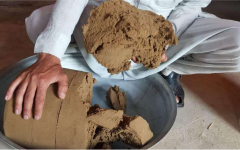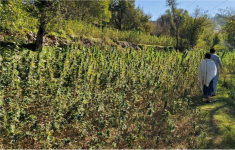Peter_Matanzas
Member
The Deep Purple Dashti male:


Yep. I grew Manipur Burma this past summer/autmun. It takes a reeeeaally long time. Before you cut it down, switch the lights to 9.5. It will help. I haven't grown it indoors, but I''l bet it responds to the red/orange spectrum better. There's also the possibility of some plants having the "endless re-flower" gene. It could be some survival mechanism that some of them have built in.
Thanks for the feedback!
Howd you like the smoke?
MAHA KALA i found the well selected and homegrown Chellakutti from Khalifa truly potent, trippy, long lasting, and with that lovely-spicy south indian terps.













